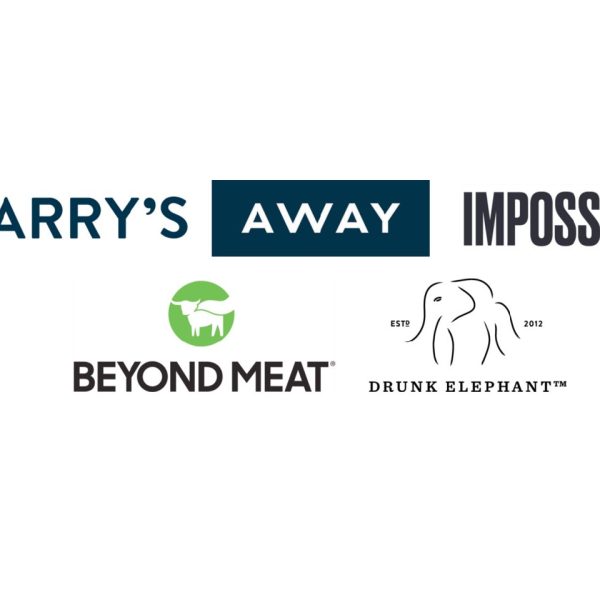
BILLION-DOLLAR BURGERS, RAZORS, BAGS AND ELEPHANTS
Via Medium
There’s a theory in the world of consumer products that says proliferation of preferences will lead to more winners with smaller outcomes. I agree with that theory for a number of reasons, but the past ten days have been an onslaught of headlines for billion dollar brands that weren’t around just ten years ago:
May 6: Beyond Meat goes public at a $1.5 billion valuation ($25/share). Ten days later the stock closes at a share price of $87, up 248% since IPO, a market cap of $5 billion
May 9: Harry’s is acquired by Edgewell (owners of Schick) for $1.37 billion
May 12: Unilever reportedly considering $1 billion acquisition of clean skincare brand Drunk Elephant
May 13: Impossible Foods raises $300 million at a $2 billion post-money valuation
May 15: AWAY luggage raises $100 million at a $1.4 billion valuation
These numbers are absolutely staggering, but even more notable are the types of transactions: Beyond Meat is the first blockbuster food IPO of this new generation of food and beverage disruptors, while Harry’s is the first digitally native vertical brand (DNVB) to achieve a billion-dollar exit since Dollar Shave Club was bought by Unilever in 2016. Two weeks ago it would not have been crazy to suggest that young standalone food brands couldn’t successfully go public and that there won’t be billion-dollar acquisitions of DNVBs — then we had those two exact things happen within 72 two hours…
So what is the takeaway? Will the past two weeks go down as a bizarre anomaly or is this just the beginning of a series of liquidity events for well-known brands with previously ambiguous paths to exit?
Beyond Meat
Why it’s surprising: At only $88 million of sales in 2018, it would have been understandable to assume that Beyond Meat was just far too small to be a viable public company at all. Then the stock ran up to what is (as of close on May 15th) a valuation of 54x 2018 revenue, a multiple that would be crazy for a software company with contracted revenue, let alone a brand selling plant-based “meat” in the grocery store.
Why it might just make sense: Beyond Meat has a number of extremely attractive factors in its favor: mega-trend of consumers adopting flexitarian diets for health reasons, environmental footprint of meat supply chain driving impact investors towards alternatives, a massive foodservice opportunity to drive incremental consumers to fast food restaurants, meaningful intellectual property in their product innovation and the sheer size of the market they’re disrupting.
Who it’s good news for: The obvious answer is Impossible Foods, who certainly didn’t take long to make a big splash with a fundraise of their own. A more nuanced is winner here is Califia Farms, who certainly will benefit from being the “Beyond Meat of Dairy” if they one day test the public markets.
Harry’s
Why it’s surprising: While Harry’s had gathered real momentum it still represents less than 1% of the global shaving market with only breakeven profitability. For a public company like Edgewell, paying over $1 billion for a DNVB with no earnings contribution is enough to startle your investors — since announcement of the deal, Edgewell stock is down 15%.
Why it might just make sense: For a number of key reasons, Harry’s is like virtually no other DNVB: the Company actually owns its manufacturing facility in Germany, it sells products that are high velocity with high repeat rates, it derives ~80% of its sales from third party retailers like Target and Walmart, it has successfully launched a wide range of horizontal products beyond shaving and even other brands that target a whole new consumer entirely. Harry’s is also led by brand pioneers in Jeff Raider and Andy Katz-Mayfield who will step up to run Edgewell’s US operations.
Who it’s good news for: Much will be made of Harry’s being a “DTC acquisition” — this misses the point. This deal is great news not for all DNVBs, but for consumable brands with a strong omnichannel strategy. Look no further than the other brands at Target and Walmart that share a shelf with Harry’s: brands like Quip, Oars & Alps or Beautycounter. These massive retailers are creating a profitable scaling opportunity that might provide the last box to check in order to be acquirable by large public companies.
Final Thoughts
Billion-dollar outcomes will never be the norm for consumer product exits, but these past two weeks have reminded us just how powerful their momentum can be when they resonate with the modern consumer. These transactions continue to bring waves of optimism and excitement to what is already a powerful ecosystem in early stage CPG.
The important thing to remember is there is no simple formula for success and definitely no fool-proof “DTC Playbook”. These five companies are valued this way because they have innovated in a way that resonates — something that their predecessor brands have not, and something that comes with trust. They have transcended their products and their channels and created brands that represent the future of protein, grooming, travel and skincare.